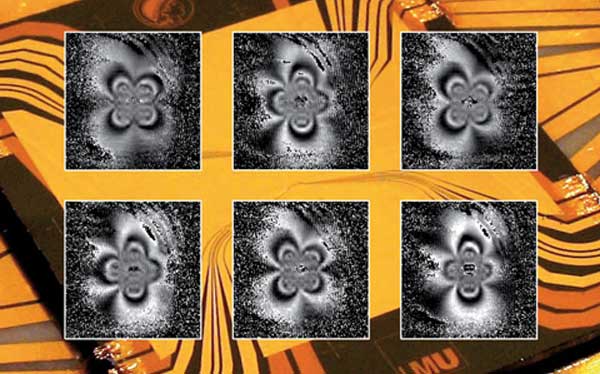
A microwave field is the same electromagnetic energy field that causes attraction in magnets, but with more powerful more powerful energy waves.
The scientists used small clouds of ultra-cold atoms that had been laser-cooled to a temperature of a few millionths of a degree above absolute zero. At these temperatures, the atoms obey the laws of quantum physics. Their quantum state is very sensitive to externally applied electromagnetic fields, which makes them ideal sensors.
The setup itself is at room temperature, but the atoms trapped inside are cooled within a few seconds with the help of laser light. For the measurement, the atoms are positioned at the desired location above the microwave circuit with the help of static magnetic fields, and subsequently the microwave field is turned on.
A unique feature of the new method is that it does not require the microwave field to be scanned point-by-point. Rather, a fully two-dimensional image of one component of the microwave field can be recorded in a single shot - just like the outline of magnetic field can be outlined by iron fillings. This increases the data acquisition rate dramatically.
These findings appeared online in the journal Applied Physics Letters.



Reader Comments
to our Newsletter